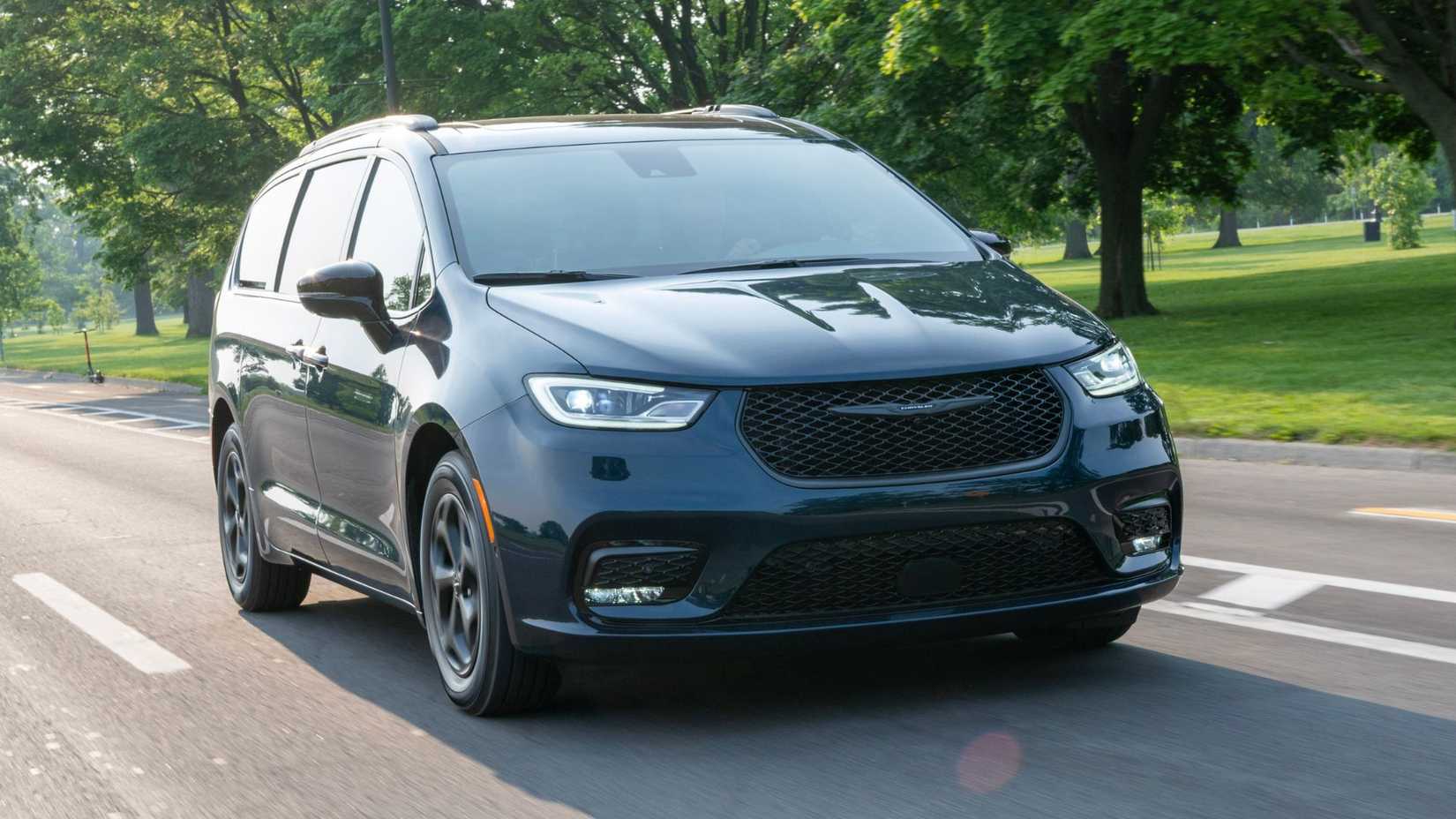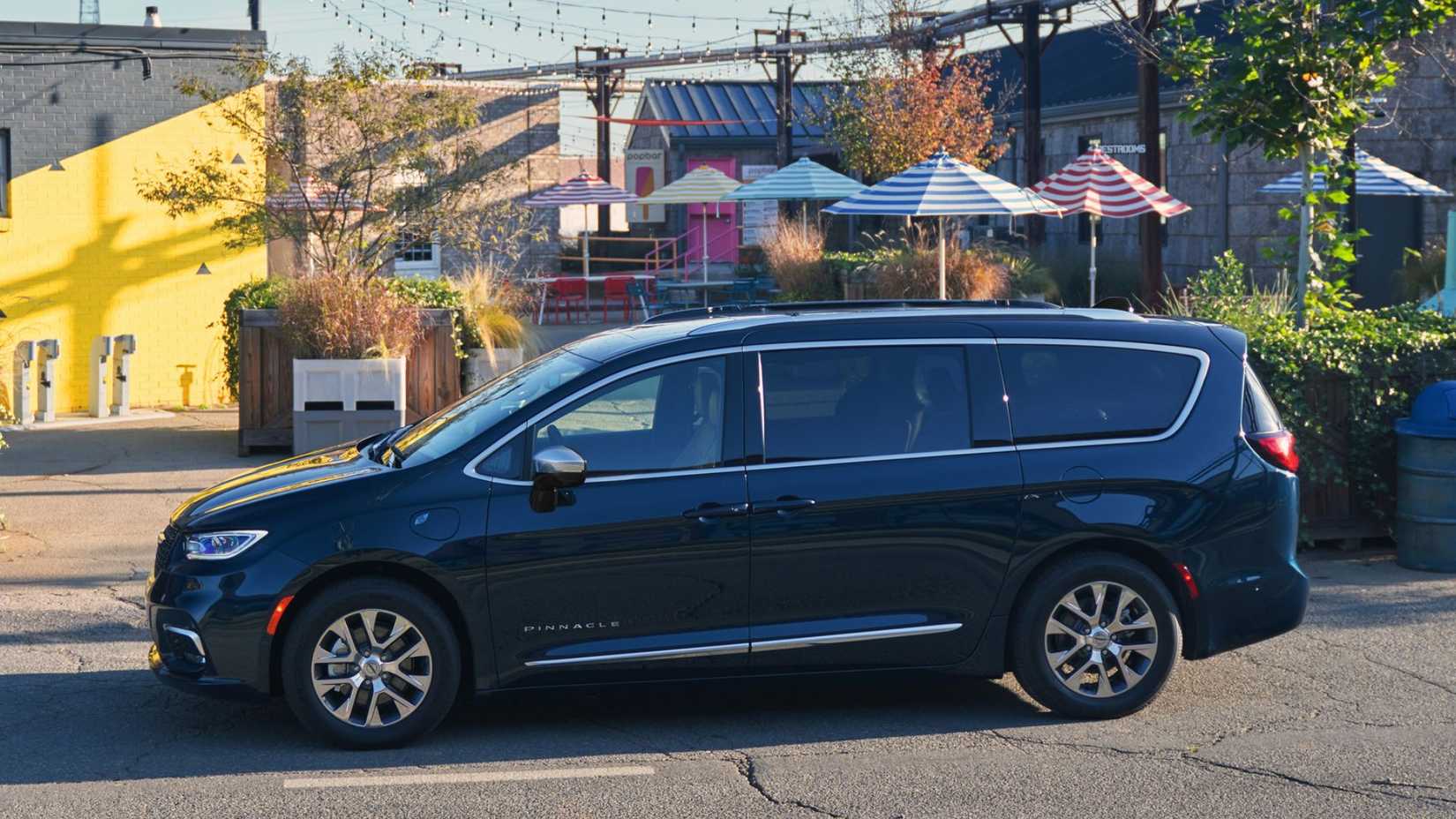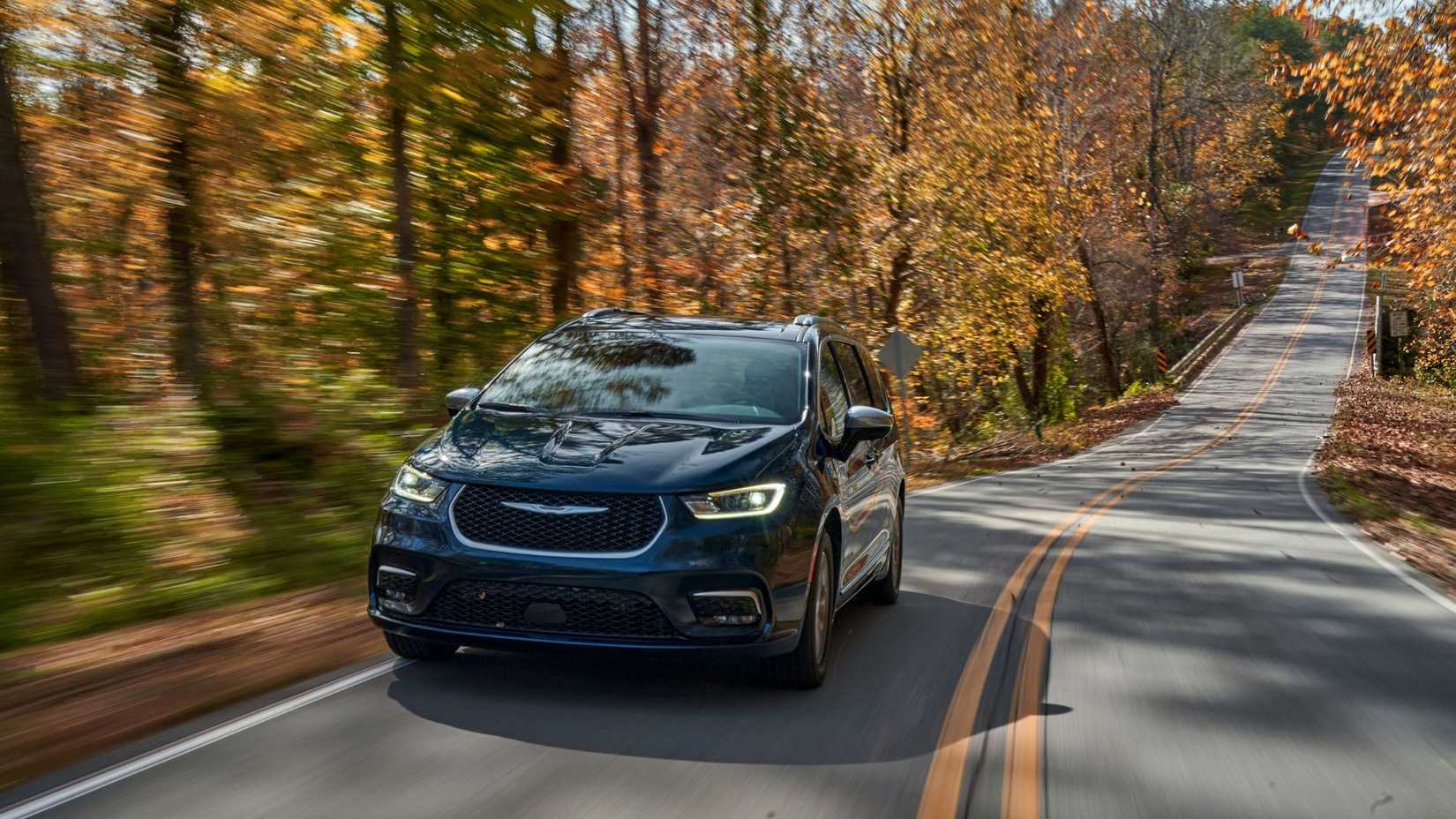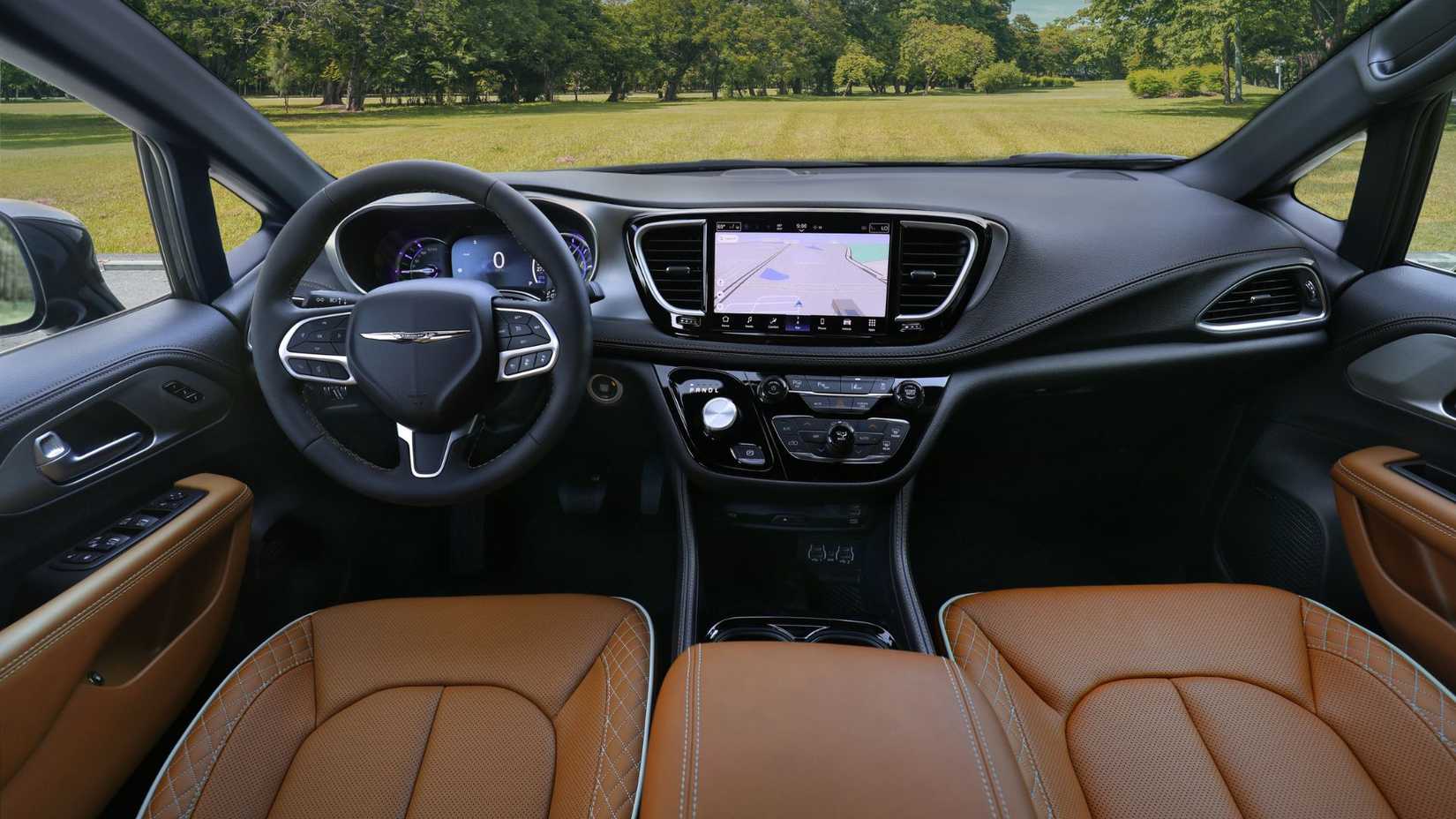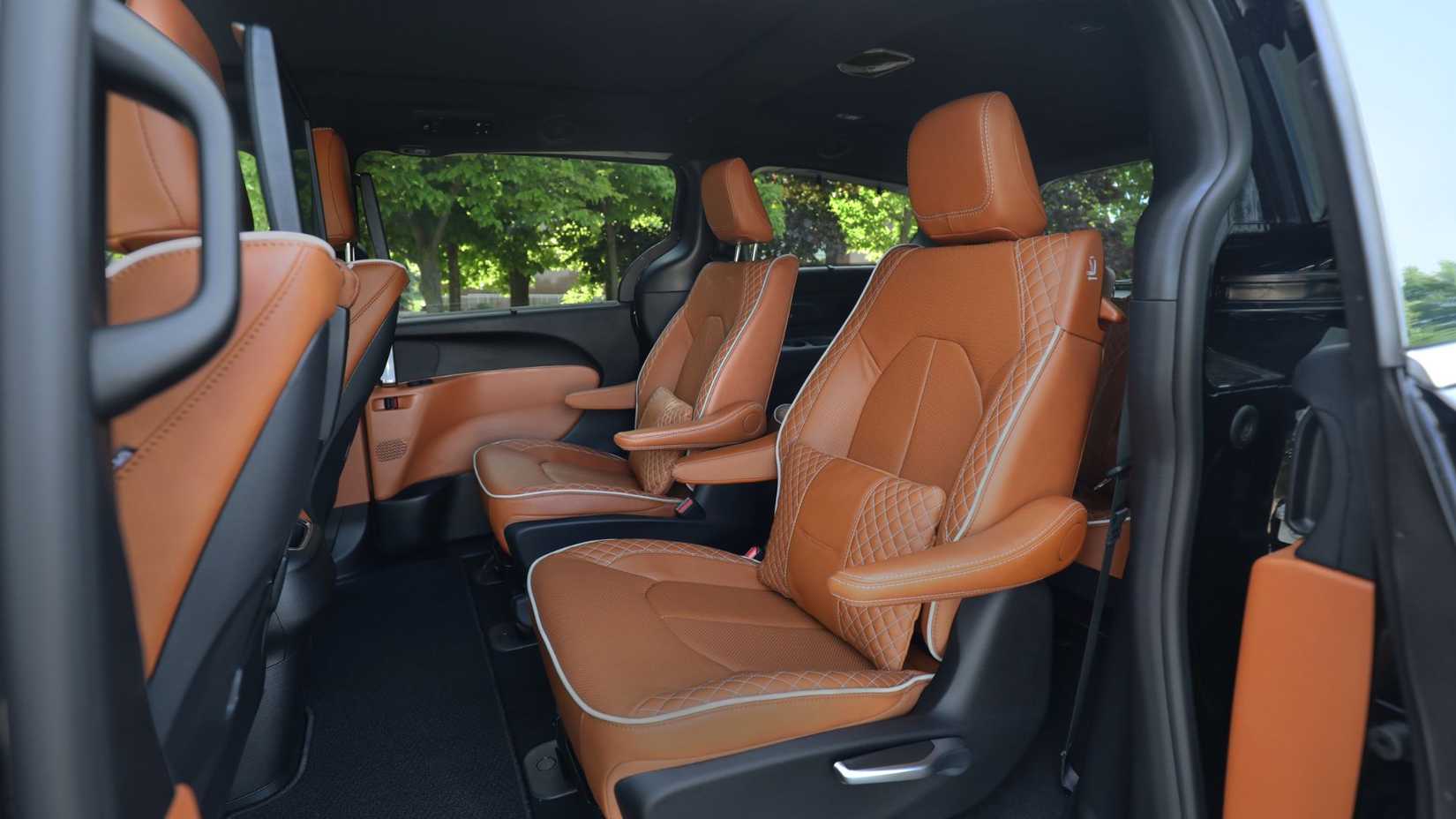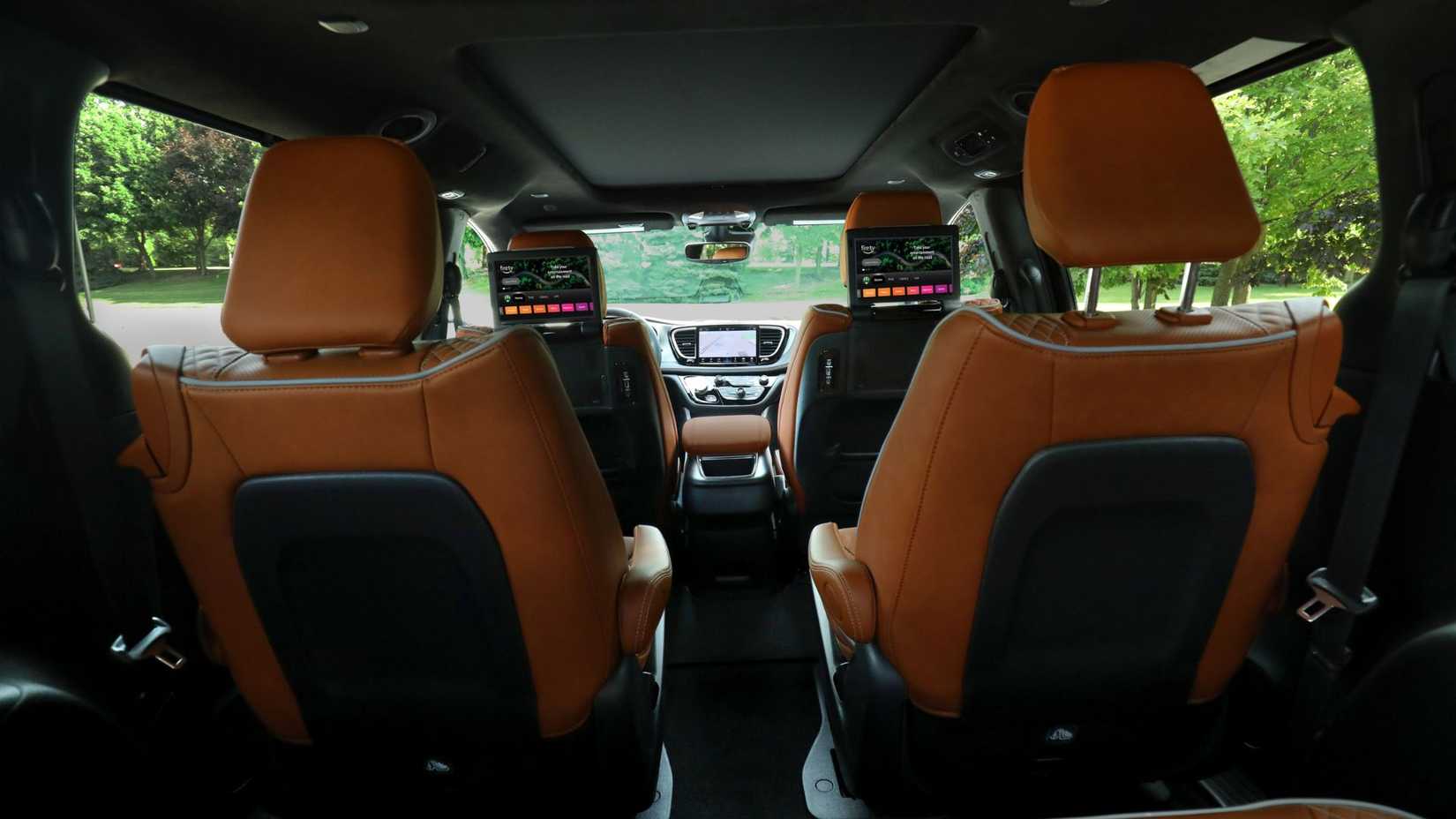If you’re hunting for a used family hauler that maxes out cargo space and fuel efficiency, there’s one body style that should be at the top of your list—and it’s not an SUV. Sure, some drivers love minivans and others don’t, but the modern hybrid minivan leaves today’s SUVs in the dust when it comes to flexibility and space.
Take the Chrysler Pacifica PHEV, for example. This plug-in hybrid was the first of its kind, kicked off the electrification of the Pentastar V6, and today stands as one of the roomiest hybrid family haulers you can snag for $15,000 or less.
On top of that, you’ll probably save big on fuel while getting way more room than a similarly sized SUV which, spoiler alert, will cost a lot more. Of course, it’s not all sunshine and rainbows, and we’ll break down the pros, cons, and some key numbers below.
In order to give you the most up-to-date and accurate information possible, the data used to compile this article was sourced from the Chrysler website and other authoritative sources, including Autotempest, CarBuzz, and the EPA.
Pentastar’s First Hybrid Debuted in a Plug-in Minivan
The Pacifica rolled out in 2017, taking over for the Chrysler Town & Country. It wasn’t just another minivan—it was the market’s first plug-in hybrid, and with big federal rebates in the U.S. and Canada, buying one was a no-brainer compared to a regular gas-only model.
Under the hood, the Pacifica Hybrid used a tweaked version of the trusty 3.6-liter Pentastar V6, upgraded with hybrid tech for at-home charging and up to 33 miles of all-electric range. On top of that, the whole platform was reworked from the ground up for a quieter, smoother ride and sharper handling.
The Pacifica Hybrid packs up to 33 miles of all-electric range, which is key for daily life. When it launched, Chrysler pointed out that most minivan drivers cover about 30 miles a day, meaning errands and commutes could often be done without touching a drop of gas.
Once the battery runs low, the gas engine seamlessly kicks in, switching to hybrid mode, so your drive keeps going with zero interruptions.
And don’t worry about plugging in all the time—it’s optional. Just charge when it’s convenient, and the minivan takes care of the rest.
Why Not Consider an SUV?
Sure, a minivan is a smart pick if you want to maximize space and cut fuel costs, but the Pacifica Hybrid isn’t perfect. For starters, it’s not built for towing, so families relying on a single vehicle for trailers might need to look elsewhere.
Next, while other Pacifica trims offer AWD, the hybrid sticks to front-wheel drive—a potential dealbreaker in harsher climates.
Finally, SUVs still win if you plan on hitting rough roads, light trails, or more off-the-beaten-path adventures. Their higher ride height and ground clearance appeal to some shoppers, even though minivans feel more car-like. If none of that matters to you, keep reading to see how the Pacifica Hybrid stacks up against two popular SUV rivals.
Here’s the Math That Matters
Let’s kick things off with engines and performance. We’re comparing the Pacifica Hybrid to two other three-row family favorites: the Jeep Wagoneer and the Dodge Durango, which packs a whopping 475 horsepower for under $50,000 as of 2026.
As you check out the table below, pay attention to towing capacity and annual fuel costs. The Pacifica Hybrid is the least powerful of the bunch, the only one without AWD, and the only one that can’t tow a thing.
The upside? It costs about half as much to drive each year compared to the SUVs—a big win if saving on fuel matters to your family budget.
Chrysler Pacifica Hybrid vs. Jeep Wagoneer vs. Dodge Durango: Specifications
|
2025 Chrysler Pacifica Hybrid |
2025 Jeep Wagoneer 2WD |
2025 Dodge Durango |
|
|---|---|---|---|
|
Engine |
3.6-Liter V6 Gas Hybrid |
3.0-Liter Inline Six-Cylinder Gas Twin Turbo |
3.6-Liter Gas NA |
|
Power (Net Combined) |
260 HP |
420 HP |
295 HP |
|
Torque |
N/A |
468 LB-FT |
260 LB-FT |
|
Transmission |
Electrically Variable Transmission |
8-Speed Automatic |
8-Speed Automatic |
|
Drivetrain |
Front-Wheel Drive |
Rear-Wheel Drive |
Rear-Wheel Drive |
|
Towing Capacity |
Not Recommended |
6,120 LBS |
6,200 LBS (with V6 Engine) |
|
EPA Annual Fuel Cost (Approx.) |
$1,200 (Electricity and Fuel) |
$2,350 |
$2,350 |
Next up: size and measurements. The Pacifica is just a touch bigger than the Dodge Durango, with under two inches separating their wheelbases and less than four inches in overall length.
The Wagoneer, on the other hand, is a different story—it’s more than 10 inches longer and three inches wider than the Pacifica Hybrid, though their wheelbases are nearly identical at just 1.4 inches apart.
Don’t forget about height: the Wagoneer towers over the Pacifica, giving it a clear advantage in ride height and road presence.
Chrysler Pacifica Hybrid vs. Jeep Wagoneer vs. Dodge Durango: Dimensions
|
2025 Chrysler Pacifica |
2025 Jeep Wagoneer |
2025 Dodge Durango |
|
|---|---|---|---|
|
Length |
204.3 Inches |
214.7 Inches |
200.8 Inches |
|
Width with Mirrors |
90.4 Inches |
94.0 Inches |
85.5 Inches |
|
Height |
69.9 Inches |
75.6 Inches |
72.1 Inches |
|
Wheelbase |
121.6 Inches |
123.0 Inches |
119.8 Inches |
|
Cargo (All Seats in Use) |
32.3 CU-FT |
27.4 CU-FT |
17.2 CU-FT |
|
Cargo (All Seats Folded) |
140.5 CU-FT |
116.7 CU-FT |
85.1 CU-FT |
Cargo space tells a big part of the story. Even though the Jeep Wagoneer is bigger in nearly every dimension, it still lags behind the Pacifica Hybrid in both minimum and maximum cargo capacity by at least 15 percent.
The Dodge Durango, with its three rows of seats, falls even further behind. The Pacifica beats it by at least 39 percent in cargo space.
And that’s just the start. Passenger comfort and accommodations add another layer to the Pacifica’s advantage.
Chrysler Pacifica Hybrid vs. Jeep Wagoneer vs. Dodge Durango: Interior Dimensions
|
2025 Chrysler Pacifica |
2025 Jeep Wagoneer |
2025 Dodge Durango |
|
|---|---|---|---|
|
1st Row Headroom |
40.1 Inches |
41.3 Inches |
39.9 Inches |
|
1st Row Legroom |
41.1 Inches |
40.9 Inches |
40.3 Inches |
|
1st Row Shoulder Room |
63.8 Inches |
66.1 Inches |
58.5 Inches |
|
1st Row Hip Room |
59.0 Inches |
63.4 Inches |
57.0 Inches |
|
2nd Row Headroom |
39.6 Inches |
40.0 Inches |
39.8 Inches |
|
2nd Row Legroom |
39.0 Inches |
42.7 Inches |
38.6 Inches |
|
2nd Row Shoulder Room |
63.0 Inches |
65.2 Inches |
57.7 Inches |
|
2nd Row Hip Room |
64.8 Inches |
63.0 Inches |
55.5 Inches |
|
3rd Row Headroom |
38.7 Inches |
39.0 Inches |
37.8 Inches |
|
3rd Row Legroom |
36.5 Inches |
36.6 Inches |
33.5 Inches |
|
3rd Row Shoulder Room |
61.2 Inches |
64.4 Inches |
50.4 Inches |
|
3rd Row Hip Room |
49.5 Inches |
51.6 Inches |
42.4 Inches |
The Pacifica takes the crown for first-row legroom and second-row hip room, while the Jeep Wagoneer leads in most of the other measurements, though usually by just a small margin.
The Durango nudges past the Pacifica Hybrid in second-row headroom, but otherwise the Pacifica has more room across the board. Hip and shoulder space are especially generous, thanks in part to the Pacifica Hybrid being about five inches wider than the Durango.
In short, the Pacifica Hybrid tops both competitors in cargo space and gives third-row passengers nearly as much headroom and legroom as the massive Wagoneer, all while costing about half as much to fuel.
How Much a Used Pacifica PHEV Will Set You Back
The Kia Carnival Hybrid might squeeze out a bit more cargo space than the Pacifica Hybrid, but don’t expect to find many used ones, as it only hit the market last year. The Pacifica Hybrid, on the other hand, has been around for nine years, so the used market is full of options at all sorts of mileage and price points.
If your budget is around $35,000, you could score one of the most spacious hybrid minivans out there with fewer than 6,000 miles. On the other end of the spectrum, used models with around 100,000 miles typically go for $13,000 to $15,000.
